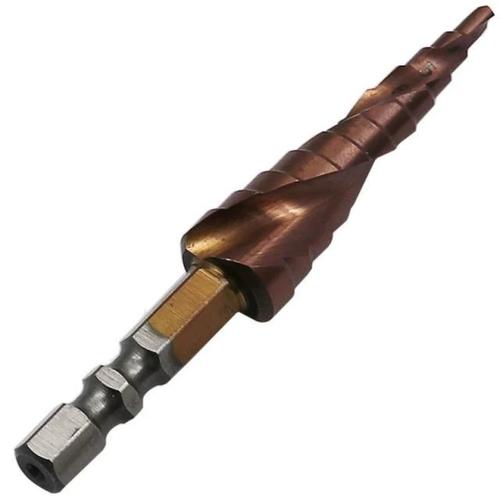
Step Drill Bit: A Comprehensive Guide
When it comes to drilling holes in metal, plastic, or wood, the right tool can make all the difference. One such tool is the step drill bit, which is designed to handle a variety of tasks with precision and efficiency. In this article, we will delve into the details of step drill bits, exploring their features, benefits, and applications.
Understanding the Step Drill Bit
The step drill bit, as the name suggests, features a stepped design that allows it to drill holes of different sizes without the need for multiple bits. This unique design is achieved by combining several cutting edges into a single bit, each with a different diameter. This makes it an incredibly versatile tool for a wide range of drilling tasks.

Step drill bits are typically made from high-speed steel (HSS) or carbide, which provides excellent durability and heat resistance. The HSS step drill bits are suitable for general-purpose drilling, while the carbide-tipped bits are ideal for more demanding applications, such as drilling through tough materials like stainless steel.
Features of Step Drill Bits
Here are some of the key features that make step drill bits stand out:
- Multiple Hole Sizes: Step drill bits come in various sizes, with each bit featuring multiple cutting edges for different hole diameters. This allows you to drill holes of various sizes without changing bits.
- Staggered Cutting Edges: The cutting edges on a step drill bit are staggered, which helps to reduce the risk of the bit breaking or the material from chipping.
- Centered Tip: The tip of a step drill bit is centered, which ensures that the bit stays on track while drilling, resulting in cleaner and more precise holes.
- Fluted Shank: The shank of a step drill bit is fluted, which helps to remove chips and debris from the hole, keeping the bit cool and extending its lifespan.
Benefits of Using Step Drill Bits
Using step drill bits offers several advantages over traditional drill bits:
- Time Efficiency: With the ability to drill multiple hole sizes in a single bit, step drill bits can save you time and effort, especially when working on projects that require a variety of hole sizes.
- Cost-Effective: Since you don’t need to purchase multiple bits for different hole sizes, step drill bits can be a more cost-effective option.
- Improved Accuracy: The centered tip and staggered cutting edges of step drill bits help to ensure that holes are drilled with greater precision and consistency.
- Reduced Risk of Breaking: The staggered cutting edges and high-quality materials used in step drill bits make them less likely to break during drilling, especially when working with tough materials.
Applications of Step Drill Bits
Step drill bits are suitable for a wide range of applications, including:

- Woodworking: Drilling holes for screws, dowels, and other fasteners in wooden projects.
- Metalworking: Drilling holes in metal sheets, pipes, and other metal components.
- Plastic Fabrication: Drilling holes in plastic materials for mounting hardware, electrical components, and other applications.
- Automotive and Industrial Applications: Drilling holes in vehicle parts, machinery, and other industrial components.
Choosing the Right Step Drill Bit
When selecting a step drill bit, consider the following factors:
- Material: Choose a bit made from the appropriate material for the material you’re drilling. For example, use HSS bits for general-purpose drilling and carbide bits for tough materials.
- Hole Size: Select a bit with the appropriate step sizes to match the hole sizes you need to drill.
- Shank Size: Ensure that the shank size of the bit is compatible with your drill.
Conclusion
Step drill bits are a valuable addition to any tool collection, offering versatility, efficiency, and precision. By understanding their features, benefits, and applications, you can make an informed decision when selecting the right step drill bit for your needs. Whether you’re a hobbyist, DIY enthusiast,





